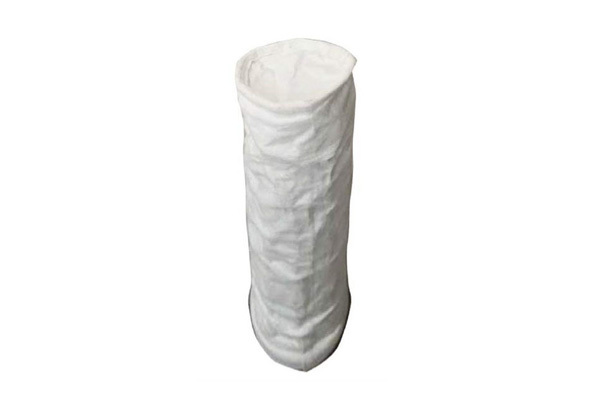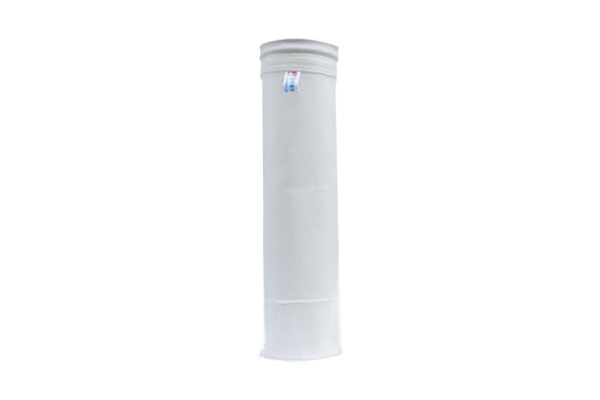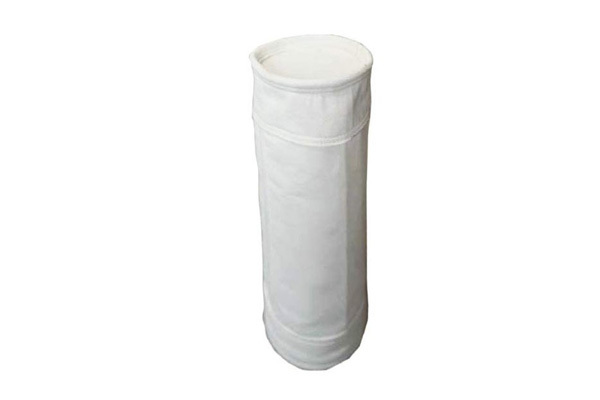How to Conduct Effective Testing of Baghouse Filter Bags: A Comprehensive Guide
Release time:
2025-04-30
How to Conduct Effective Testing of Baghouse Filter Bags Baghouse filter bags play a crucial role in maintaining air quality and optimizing industrial processes. Ensuring the effectiveness of these bags through proper testing is essential for operational efficiency and regulatory compliance. This comprehensive guide will explore various testing methodologies, equipment, and best practices for eval
How to Conduct Effective Testing of Baghouse Filter Bags
Baghouse filter bags play a crucial role in maintaining air quality and optimizing industrial processes. Ensuring the effectiveness of these bags through proper testing is essential for operational efficiency and regulatory compliance. This comprehensive guide will explore various testing methodologies, equipment, and best practices for evaluating baghouse filter bags.
Table of Contents
1. Introduction to Baghouse Filter Bags
2. Importance of Testing Baghouse Filter Bags
3. Testing Methodologies for Baghouse Filter Bags
- 3.1 Visual Inspection Techniques
- 3.2 Differential Pressure Testing
- 3.3 Airflow Testing
- 3.4 Fabric Performance Testing
4. Equipment Required for Testing
5. Troubleshooting Common Issues
6. Best Practices for Baghouse Filter Bag Testing
7. Case Studies: Successful Testing Protocols
8. Frequently Asked Questions
9. Conclusion
Introduction to Baghouse Filter Bags
Baghouse filter bags, often referred to as filter socks, are integral to various industrial applications, particularly in the processing of particulate matter. These bags capture dust and other contaminants, ensuring cleaner air is released into the atmosphere. As environmental regulations become more stringent, the importance of effective filtration systems has never been greater. Regular testing of baghouse filter bags is vital for confirming their functionality and longevity.
Importance of Testing Baghouse Filter Bags
Testing baghouse filter bags is paramount for several reasons:
- **Regulatory Compliance**: Many industries are subject to environmental regulations that mandate specific emission limits. Regular testing ensures compliance and avoids potential fines.
- **Operational Efficiency**: A well-functioning baghouse system enhances operational efficiency, reducing energy costs associated with fan operation and preventing unnecessary downtime.
- **Preventative Maintenance**: Regular testing allows for early detection of issues, enabling proactive maintenance and extending the lifespan of baghouse systems.
- **Improved Air Quality**: Effective filtration directly correlates with improved air quality, benefiting employee health and safety.
Testing Methodologies for Baghouse Filter Bags
To ensure the effective performance of baghouse filter bags, several testing methodologies are employed. Each technique serves a unique purpose and provides valuable insights into the condition and efficacy of the filtration system.
Visual Inspection Techniques
Visual inspection is the first step in testing baghouse filter bags. This method involves a thorough examination of the bags to identify any visible signs of wear, damage, or deformation. Key aspects to inspect include:
- **Material Integrity**: Check for holes, tears, or abrasions in the fabric.
- **Seams and Stitching**: Inspect seams for signs of unraveling or weakness.
- **Accumulation of Dust or Debris**: Excessive buildup can indicate issues with the filtration process.
Visual inspections should be conducted regularly, particularly during scheduled maintenance or after significant operational changes.
Differential Pressure Testing
Differential pressure testing measures the pressure drop across the filter bags during operation. This method provides insights into the condition of the bags and the overall efficiency of the filtration system. A significant increase in differential pressure may indicate:
- **Clogged or Dirty Bags**: Excessive buildup of particulate matter may require cleaning or replacement.
- **Leaks**: An unexpected drop in pressure could indicate leaks or damage to the bags.
To perform this test, one must measure the pressure before and after the bags, using pressure gauges. Monitoring these readings over time can help establish a baseline for performance.
Airflow Testing
Airflow testing evaluates the volume of air passing through the filter bags and can identify potential issues with bag performance. Proper airflow is essential for optimal filtration, and deviations from expected levels can signal problems such as:
- **Blockages**: Clogged bags can restrict airflow, leading to inefficiencies.
- **Improper Installation**: Incorrectly installed bags may not allow for the intended airflow.
Using an airflow meter, technicians can measure the air volume at various points in the system, ensuring that the filter bags function as intended.
Fabric Performance Testing
Fabric performance testing involves analyzing the material properties of the filter bags, ensuring they meet the necessary standards for effective filtration. Key tests include:
- **Burst Strength Testing**: Determines the maximum pressure the fabric can withstand before failing.
- **Tensile Strength Testing**: Measures the force required to pull the fabric until it breaks, indicating its durability.
These tests help in selecting the right material for specific applications and environments.
Equipment Required for Testing
To conduct effective testing of baghouse filter bags, specific equipment is necessary:
- **Pressure Gauges**: For measuring differential pressure.
- **Airflow Meters**: To assess the volume of air passing through the system.
- **Visual Inspection Tools**: Such as mirrors and flashlights for thorough examinations.
- **Material Testing Equipment**: Including tensile and burst strength testers for fabric analysis.
- **Cleaning Equipment**: For maintaining the cleanliness of filter bags during testing.
Investing in high-quality testing equipment is crucial for obtaining accurate results and ensuring the reliability of baghouse systems.
Troubleshooting Common Issues
Identifying and resolving common issues with baghouse filter bags is essential for maintaining optimal performance. Here are some frequent problems and their respective troubleshooting steps:
- **Increased Differential Pressure**:
- Check for bag clogging and perform cleaning.
- Inspect for leaks in the system.
- **Inadequate Airflow**:
- Assess the installation of filter bags to ensure they are correctly positioned.
- Evaluate the overall system design and capacity.
- **Fabric Damage**:
- Replace any damaged bags immediately to prevent further issues.
- Review operating conditions to identify potential causes of fabric wear.
By systematically addressing these problems, operators can enhance the performance and lifespan of their baghouse filter bags.
Best Practices for Baghouse Filter Bag Testing
To maximize the effectiveness of baghouse filter bag testing, it’s advisable to adopt the following best practices:
- **Regular Testing Schedule**: Establish a routine testing schedule to ensure consistent monitoring of bag performance.
- **Documentation**: Keep detailed records of testing results, maintenance activities, and any observed changes in performance.
- **Training**: Ensure that staff are adequately trained in testing procedures and understand the importance of baghouse maintenance.
- **Utilize a Professional Service**: Consider hiring professional services for comprehensive testing and analysis, especially for complex systems.
By following these best practices, organizations can enhance the reliability and efficiency of their baghouse systems.
Case Studies: Successful Testing Protocols
Several industries have demonstrated the success of implementing robust testing protocols for baghouse filter bags. For instance, a manufacturing facility specializing in metal processing faced frequent downtime due to bag failures. By adopting a comprehensive testing regimen, including differential pressure and airflow testing, they significantly reduced unplanned maintenance and extended the lifespan of their filter bags.
Another case involved a food processing plant that implemented regular visual inspections and fabric performance testing. This proactive approach ensured compliance with health regulations and improved overall air quality in the facility, benefiting both employees and production outcomes.
These case studies illustrate the transformative impact of effective testing protocols on overall operational efficiency.
Frequently Asked Questions
1. How often should baghouse filter bags be tested?
Regular testing should be conducted based on the operational demands and environmental factors, but a quarterly schedule is often advisable for ongoing monitoring.
2. What are the signs that a baghouse filter bag needs to be replaced?
Look for visible damage, increased differential pressure readings, and reduced airflow as indicators of potential replacement needs.
3. Can I perform testing myself, or should I hire a professional?
While some testing can be performed in-house, hiring professionals ensures thorough analysis and adherence to best practices.
4. What is the typical lifespan of baghouse filter bags?
The lifespan can vary widely based on the application and operating conditions, but they typically last from 1 to 3 years with proper maintenance.
5. How can I improve the efficiency of my baghouse system?
Regular testing, prompt maintenance, and optimal bag selection based on specific applications can greatly enhance system efficiency.
Conclusion
Conducting effective testing of baghouse filter bags is essential for maintaining operational efficiency, ensuring regulatory compliance, and improving air quality. Through a combination of visual inspections, differential pressure testing, airflow evaluations, and fabric performance testing, organizations can effectively monitor the condition of their filter bags. By adopting best practices and utilizing appropriate equipment, businesses can extend the lifespan of their filtration systems and reduce downtime. Embracing these methodologies will not only benefit operational performance but also contribute to a healthier and safer working environment.
latest News










